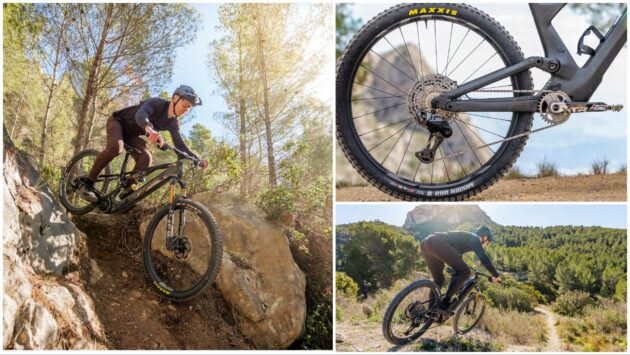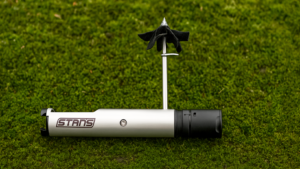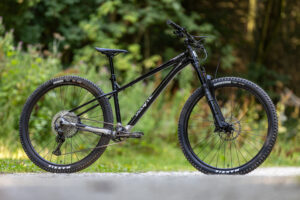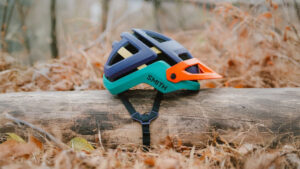After years of speculation, at long last Shimano has a fully wireless, electronic drivetrain to rival SRAM. It’s fast, reliable, retracts when hit, and even moves back into place afterwards
I tested Shimano’s new wireless groupset: it shifts faster than SRAM, uses a hidden battery, and boasts a party trick XC racers, enduro riders and weekend warriors alike are going to love
Shimano invented electronic shifting for mountain bikes, but it’s hard to remember because it’s been more than 10 years since we first clapped eyes on it. In the decade since Di2 came out we’ve watched and waited in vain for the next obvious step; a wireless electronic drivetrain not limited to e-bike use, something SRAM didn’t shy away from when it launched AXS back in 2019.
Now, finally, at last. At long last. It’s here. The latest XTR Di2 groupset from Shimano has 12 speed wireless shifting, a battery hidden inside the deralleur, better clearance all round, a brand new cassette design, a bespoke wireless protocol, some interesting ideas about customisation and best of all – lightning fast shifting. That alone will help make it one of the best mountain bike groupsets around for some riders.

Shimano’s new XTR Di2 has been a long, long time coming, but it’s been worth the wait
Who knows why it took Shimano so long to develop wireless XTR. Perhaps it thought electronic shifting would blow a fuse and we’d all go back to wanting cable-operated gears. Perhaps it was too focussed on the e-bike motor market with E8000 then EP8 and now EP801 to pay it much attention. Or perhaps it just wanted things to be perfect.
– Short of time? Click here to skip to the verdict –
All I really care about now though, is whether it’s any good… and whether it’s quicker at shifting than SRAM’s radical AXS T-type Transmission, all of which you can find out by reading my review here. Or if you want a lowdown on Shimano’s new XTR wireless electronic shifting including pricing and spec, and detailing the new wheels and brakes, head over to the news story.

A mostly dry Spain in February, perfect for trying to smack off the mech on the hundreds of passing rocks
Shimano XTR need to know
- First completely wireless groupest from Shimano, with 12speed shifting
- Two XTR options, one plug-in version for e-bikes, one with battery mounted inside mech
- Mech moves when impacted, before rolling back into position again
- Shifter uses two paddles, and a mechanical cam to press a switch and change gear
- Multi-gear shifting makes it faster than SRAM AXS Transmission
- £1600 for complete drivetrain groupset, or upgrade kit is £800

XTR Di2 now comes 12 speed, and it’s not just for e-bikes thanks to its own self-contained battery, hidden inside the mech
When we tested the previous generation Shimano XTR Di2 in review, it came as an 11 speed setup on e-bikes only, machines like the YT Decoy CF Pro Race I fell in love with. The new version is 12 speed, and split in two.
There are two main versions of XTR, a completely wireless option that uses a battery hidden inside the mech’s parallelogram, and an e-bike version where the mech and its motor is hardwired into the main e-bike battery.
That makes the e-bike version more of a faff to upgrade to, but Shimano says it’s a plug and play system where the connector just slots into its modern batteries. I’m not entirely convinced this is a simple home garage job though as you’d need to drop out the motor… harder on some bikes than others. For a mechanical incompetent like me that means it’s best left to my favourite bike shop.
The new e-bike version will also only work on Shimano’s own motors of course, meaning you’ll need to get the truly wireless setup going if you’re running Bosch, Brose, DJI or any of the rest.

There are plenty of rocks to clip in Spain, but without a few months of UK riding it’s hard to speak for reliability yet
I tested both versions of XTR Di2 over three days in Spain earlier this year, on (mostly) dry and dusty alpine trails. Those riding conditions challenged XTR in many ways, but left it completely untouched in others. The trails I rode were littered with rocks and punchy little climbs to test the mech’s robustness and shifting speed. But with mostly bone dry trails, and a delay in long term test samples coming to the UK, I can’t comment on XTR’s performance in the mud… or indeed its longevity.
XTR mech £549.99 (without battery)
The first point to make is that I couldn’t feel any difference in shifting performance between the regular XTR and the e-bike version, which makes sense as they’re exactly the same in all other respects. I’ll talk about both interchangeably here then.
The latest XTR is very sleek and cool looking and sits higher off the ground and closer in to the bike than SRAM AXS. Shimano has worked hard to smooth out the faces of it and removed anything that could catch on a rock or tangle on some undergrowth.

XTR comes in two flavours, M9250 with its own battery (left), and M9260 for e-bikes with a wired battery
It’s more of a wedge shape than Shimano of old, and the skid plates are there to do just as you’d imagine, deflecting a rock or root strike into a glancing blow. Incidentally there are two cage options, a long cage SGS version and mid cage GS.
XTR also still mounts to a traditional mech hanger, unlike SRAM where the derailleur bolts right onto the frame. Shimano conceded – without actually naming SRAM – that AXS probably has the edge on strength, but that XTR is much less likely to be struck in the first place thanks to its more subtle design.
I’d tend to agree with this because the Shimano mech didn’t so much as kiss a rock in my three days’ riding, despite the rocky, rutted trails of the Costa Blanca, which seemed to crowd closer the faster I rode. Or perhaps I wallopped it dozens of times, but it did its job so thoroughly I was none the wiser.
Which leads me on to XTR’s signature move, it now moves out of the way in the event of an impact, disengaging the motor to save itself… and your wallet.

The long cage version on the 10-51t cassette still sits appreciably high off the ground
SRAM AXS does this too of course, but XTR puts itself back in position again afterwards, the mech rolling back out again. This is really important if you’re racing, where a loss of power is going to be anything from super annoying to disastrous. This recovery feature is useful for regular riders too though, I’d argue, where stopping mid-descent to sort your mech out just gets in the way of the best part of mountain biking.
As I said, I’ve yet to put this to the test while actually riding, but I did get it working off the bike, and it’s appreciably fast. On the e-bike version Shimano says there’s a torque sensor in its motors to prevent it being damaged during this process. I’ve no idea what would happen to the non-e-bike mech in this situation when fitted to a bike with a rival e-bike motor… potentially it could be damaged, but Shimano didn’t get back to me on this one.
The old clutch system of retaining the chain is gone now, instead there are two springs doing the job of dampening down the chain. Shimano says this gives the chain more tension for less slap, and the dual spring system means it’s now spread more evenly across all 12 gears.
The mech’s cage certainly felt harder to push with your hand than XTR of old, and I didn’t lose my chain or notice any chainslap. But that’s hardly surprising given the excellent riding conditions, while a gunky, mud-plastered UK ride, or high-speed trails, would have been more of a test.
Shimano also told me the new system is less restrictive of your bike’s suspension now, which is possible given that the old system inherently applied most tension to the biggest sprocket. With new Di2 XTR and its more even spread, the suspension could be less restricted be the chain now in the high gears, which ironically is where you’d need the most chain tension, over rough terrain.

The removably battery is charged off the bike, it’ll tell you when it’s running low with LED indicators
XTR battery £39.99 (plus charger at £29.99)
While SRAM’s battery fixes to the back of its AXS mechs, Shimano has secreted it inside the parallelogram for added security. It’s a brilliant piece of design from the Japanese masters, and makes for a really neat and looking mech, but it’s potentially a solution to a problem that doesn’t exist. Have you ever lost a SRAM battery while riding? I haven’t, and I don’t know anyone who’s suffered this cruel fate.
Nevermind, it’s really easy to whip the battery out and charge it off the bike. Shimano uses an LED to show you when this is necessary: solid green indicates the charge is over 50%, it blinks green when you’re at 20-50%, orange 20-5% and goes red when you’re below that and really screwed. It also sends this information to your Garmin.
The wired e-bike version draws power from your e-bike’s battery of course, but Shimano says it’ll still work when the main battery is dead. This is because the Shimano batteries – like all lithium ion power packs – retain a small percentage of their charge when ‘empty’ in order to stay within a specific voltage range and prevent damage.
The XTR battery is constrained in size by its placement within the mech, Shimano says. As a result it’s only a little bigger than a SRAM AXS unit, at 310mAh to SRAM’s 300mAh. The claim is it lasts 40% longer though, thanks to Shimano’s own proprietary protocol, which draws less power.

The new 12 speed cassette features a blend of titanium, steel and alloy sprockets, all mounted to a Microspline driver body
XTR Cassette £399.99
There’s no change in gearing on the new XTR from previous incarnations, it’s still 12 speed and it’s still a 10-51t cassette with the same spread of gears.
More interestingly, there’s now a 9-45t compact drive option that weighs 70g less, it comes with a dedicated mech with a shorter cage offering 23mm better ground clearance. It’s the first time we’ve seen Shimano offer this high gear for mountain bikes, after introducing the technology two years ago for gravel. Mountain bikers have had to go to e*thirteen if they wanted a 9t.
That said, I can’t see any real world riders going for this compact version though. Losing the big 51t ring to save just 70g surely won’t appeal to XC racers, while trail and enduro racers will surely miss the ability to crank up steep climbs. The obvious question then, is why didn’t Shimano add this 9t sprocket to its standard hub, and either increase the gearing range or one-upping SRAM with a 13speed drivetrain?
XTR shifter £184.99
The new shifter resembles the mechanical shifter of old, by which I mean it isn’t two buttons on top of each other, like SRAM’s. Instead there are two little paddles or pads that sit roughly where they did on previous XTR, they’re both push operated and you can angle them in pretty much any direction to line up with your thumb.

Paddles on the XTR shifter can be adjusted physically, and digitally via the E-Tube app
Most importantly though, the paddle is in fact a mechanical shift rather than a straight up button, as with SRAM AXS. The XTR paddle moves a cam, which in turn presses a button and sends its signal wirelessly to the mech.
The third button is there for microadjusts, letting you trim the gear if it’s not quite lined up right. You can also customise this button to control Shimano’s Freeshift e-bike gearing, or third party systems, like a Garmin or a light for night riding.

XTR is a little more showy in this 2025 incarnation, it’s still as stiff feeling as ever though
XTR crankset (cranks £249.99, chainring £129.99)
There’s a new crankset in the XTR Di2 range, and it’s split into two versions: one for enduro or trail riding, and one for XC use. Both get the latest Hollowtech II construction and use a 55mm chainline, but the XC version is lighter and the trail version stronger, with different spindles.
The trail version uses a standard 176mm Q-Factor build, and comes in 160, 165, 170, and 175mm crank lengths. That’s not really short enough for the latest e-bike trend though, where 155mm is now standard, and features on bikes like the new new Whyte, Bosch CX-powered Kado.

EP801 lets riders use Autoshift, changing gear for you according to Shimano’s algorithm
Autoshift
Shimano’s EP801 motor introduced Autoshift to the world, it was 11 speed and we didn’t think it worked that well at the time. The good news is it’s now 12 speed, but the bad news is it’s still too slow and unable to predict where you need to shift on the trail. Just as I found before, it failed to dump enough gears when faced with an unexpected climb right after a faster section.
I’m told Autoshift now uses machine learning though, so perhaps it would improve after learning my rides and my riding style.

The test trails were packed with little rises like this, letting me run up and down the cassette and test the XTR speed
Performance
Shifting with Shimano XTR is about as fast as it gets, I don’t think there’s anything out there to match it when you’re racing the chain up the block. And yes, that includes the mighty SRAM AXS Transmission, which plenty of us have reported feeling laggy when you’re turning the pedals over slowly.
That speed isn’t coming from Shimano’s new wireless protocol either, no matter how fast Shimano reckons it microwaves the air. Introducing another element to the system – in this case a conversion from mechanical to electrical – is always going to be slower than jamming your thumb onto an on-off button.
No, the real speed advantage comes from the prevalence of ramps on the sprockets themselves, and the ability to shift multiple gears at once. So while SRAM deliberately slowed down shifting when it introduced Transmission, Shimano has gone in the other direction and made it as rapid as possible… as has always been the case with its race-tuned groupset.
It is still possible to set the shifter to change gear just once on each shift, just like on SRAM T-type. I’d probably use this setting on an e-bike, where it’s easy to overload a drivetrain and put undue wear on the system.
In standard mode though you can hold down shift and it’ll rattle through the entire cassette about as fast as you can pedal. It’s still very controllable though, thanks to the tactile feeling of the shifter, and you can still sense when the mech is about to shift in the same way you could on the old XTR.

Check out the ground clearance on this mech, which managed to remain firmly attached to the bike on some pretty tight, picky tracks
The most useful function is XTR’s double shift though. I can press the trigger to shift, and instead of releasing it press harder to shift a second gear. Every rider must have experienced this at one point, you shift to an easier gear on a climb and as you do so realise it’s two shifts you really need to make. It made the difference between stalling out on some spots, and making it up the hill.
The tactile trigger also prevents those accidental or double shifts that can sometimes happen on SRAM’s AXS Pod 2 button controller, as your finger bounces on the shifter. Here I need to press the trigger harder, and that makes it easier to precisely time the gear change.
I’ve got to say though, I miss the ability to change gear with my forefinger, something old XTR lets you do by pulling on the downshift lever. I think I’m on my own with this though, as I’ve never heard of anyone else who actually uses this two way function.
I also miss the almost completely silent shifting of the previous Shimano XTR M9100 groupset, Shimano encourages riders to shift under load and it says this won’t cause any damage or undue wear on the drivetrain, but I find it hard to believe given the crunching sound XTR makes. Whether it’s noisier than SRAM AXS Transmission is hard to say, but it’s a different graunching sound when you crank through a whole bunch of gears together, the chain creaking in agony.
XTR didn’t prove foolproof during testing either, on one descent I must have snagged the e-bike mech power cable on a rock or branch, rendering it useless. I reckon this was pretty unlucky though, and perhaps unlikely to happen again given how close to the mech body the cable runs. I plugged it straight back in again, as it’s the same wire you’ll find connecting up Shimano’s e-bike display, and therefore designed to pull out under load.
XTR is Shimano’s top tier drivetrain, and for now the only system that gets the new wireless shifting. Wait long enough and a less expensive XT version is in the works. Tot up the numbers on XTR though, including a chain for £55 and the grand total is £1,640, which is actually £160 less expensive than SRAM’s XX Eagle AXS T-Type transmission.
Better yet, the latest XTR is backwards compatible, meaning you can run your existing XTR crankset, cassette and potentially even your chain if it’s not worn, and just buy the new parts separately. That’s available as a kit for £800 and includes the mech, shifter, battery and charger, meaning you could save around £60.

Just because XTR shifts quickly doesn’t mean I do too!
Verdict
I’ve yet to back-to-back test XTR Di2 and Eagle AXS Transmission, but I’m pretty sure Shimano is much faster per shift. The XTR speed is particularly noticeable in the high gears when you’re really hauling, while the speed feels much more ‘normal’ in the biggest three sprockets. The real speed advantage comes from the ability to shift more than one gear at once, holding down the shifter and firing the chain up and down the cassette with alarming speed. XTR is going to be the drivetrain of choice for racers then, or at least those not bound by sponsorship from a rival brand. I also think anyone else who was bothered by the slow Transmission shifting, and happens to have a spare £1600 will be interested. That’s because, despite my worst efforts to mangle it and my wanton disregard for proper shifting protocols, I didn’t manage to drop the chain or shift so fast the mech tied itself up in knots. The price is high but not as vertiginous as I’d feared, considering you can upgrade your existing XTR drivetrain for ‘just’ £800. The shifting itself is as pinpoint as I’ve ever felt on a mountain bike transmission, I’ve never had a failed shift, even on a full power 90Nm torque e-bike, while the chain is like lightening both up and down the block. Would I have it over a SRAM setup? Ask me again after a few thousand miles and at least one winter of testing.
















